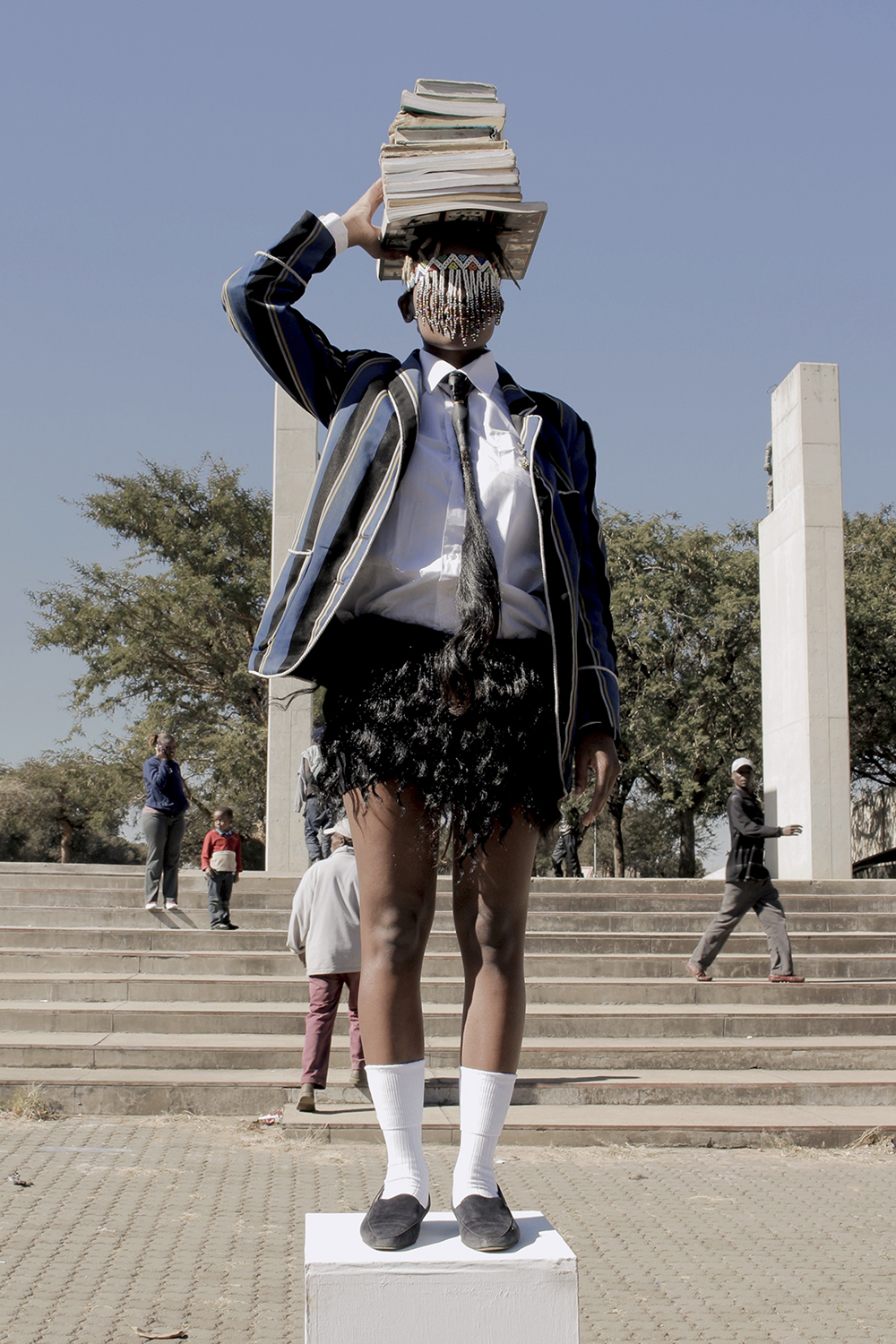Thick/er Black Lines is an interdisciplinary artist and research collective. Our work focuses on Black women and femmes in visual art.
The work of Black Feminist scholar bell hooks helps us to remember the “interlocking systems of domination that define our reality”.
This means that there are many different ways that people are categorised and experience oppression and marginalisation. Categories including gender, race and class, are not separate, they occur at the same time. The cultural theorist and activist Stuart Hall identifies how visual culture reproduces power dynamics and constructs our ideas of these categories. In our activity, we invite you to reflect on this in relation to the images we have selected.
The following questions are designed to prompt and support group or class discussion about Sethembile Msezane’s work and the themes she explores. Students might work in small groups or pairs then share their thoughts and opinions with the group.
Conversations: Looking closely at Untitled (Heritage Day), Sethembile Msezane
South Africa is a country with a rich and vibrant culture and history, home to 57.7 million people. Like so many non-European countries it experienced slavery and colonisation from 1652 by the Dutch and later the British. In 1948 British colonial rule formally ended but power was transferred to white citizens only through a system of racial segregation. Although Apartheid officially ended in 1991, it’s presence is still felt in South African society.
Spend some time looking at Untitled (Heritage Day) by Sethembile Msezane.

More on Sethembile Msezane here
- What is your first impression when you look at this image?
- What can we tell about the man/statue from the image?
- What do you think are her motivations for being physically present in this space?
- Why is her clothing significant?
- Why has she covered her face?
- What do you notice about scale in this image?
Contested Heritage: The Removal of the Edward Colston statue
The Edward Colston statue in Bristol was recently toppled by Black Lives Matter protestors who threw it into Bristol Harbour. Colston was a merchant in Bristol in the 17th century, who made his fortune as a slave trader. He was a member of the Royal African Company, from 1680 to 1692. During this time the company transported over 84,000 African men, women and children to the Caribbean and the rest of the Americas. As many as 19,000 may have died on the journey. Slavery was officially abolished in 1833 but it’s legacies remain in society through the memorialisation of significant colonial figures such as Colston and the values they upheld.
Shortly after the statue’s removal, white artist Mark Quinn made a replacement statue in the likeness of young black female protestor Jen Reid called A Surge of Power that he erected in the middle of the night.
- Why was it significant that the Edward Colston statue was removed collectively by a group of BLM protestors?
- Why was it thrown into the water?
Compare Untitled (Heritage Day) with Mark Quinn’s A Surge of Power.
- Quinn’s statue may seem like a positive action, but are there reasons why that might not be the case?
- What is needed to make and erect a statue very quickly?
- What is the difference between Msezane’s performance and Quinn’s statue?
- What could have Mark Quinn done differently as an act of allyship?
Public monuments, memorialisation and heritage
- What do public monuments tell you about the values of a city?
- Think of some famous monuments. Who or what are they for? What do they have in common? How do you feel about them?
- What other kinds of memorials are possible?
- What relationship is there between public monuments and photography?
- What do you think should be memorialised today for future generations? How, and why?
Comments from the Contributor
Sethembile Msezane’s performance and photography captures the student uprisings in South Africa and draws lines of connection to the now global Black Lives Matter movement. We were drawn to the visual statement of the pieces, the iconoclastic demands of protesters at the University of Cape Town and Msezane’s performance. The works present a visual and narrative symmetry.
The protesters’ self-authorising removal of statutes that memorialised the continued dominance of white European settlers is mirrored with Msezane’s self-directed performance. The artist, a Black woman wearing clothing indigenous to South Africa, staged next to the scenes of removal, invites the viewer to consider living, embodied practices of memoralisation of histories and cultures which are still excluded from official narratives. We felt that this work captures a specific context as well as having much to say to the UK and beyond.
Other artists our contributor thinks might inspire you
About the Contributor
Thick/er Black Lines is an interdisciplinary research-led initiative applying contemporary art theory, cultural studies and social practices to rewrite histories and to negotiate a way forward.

